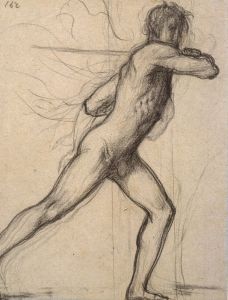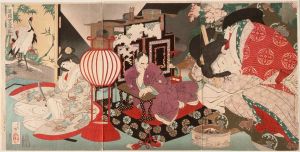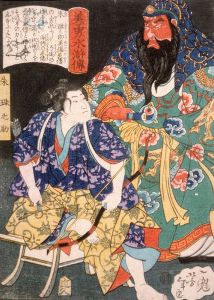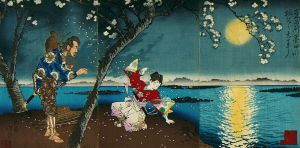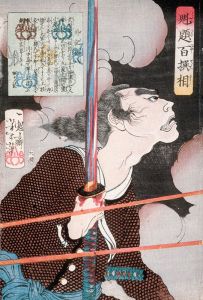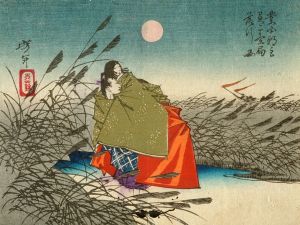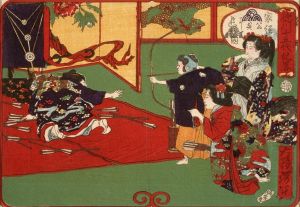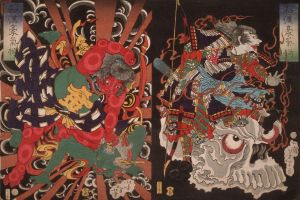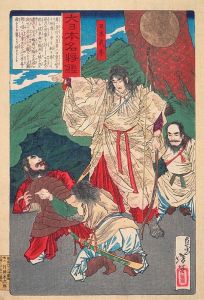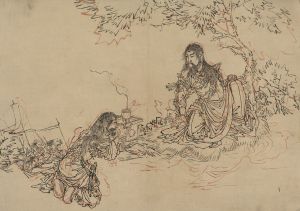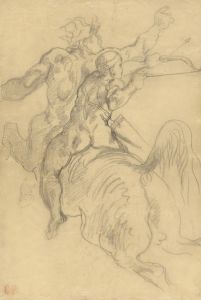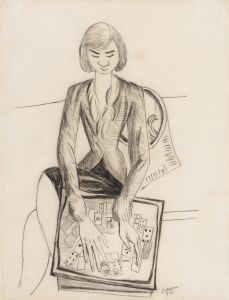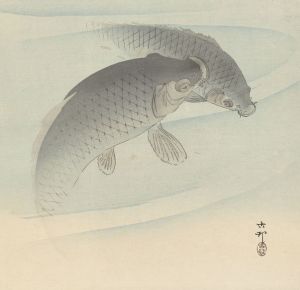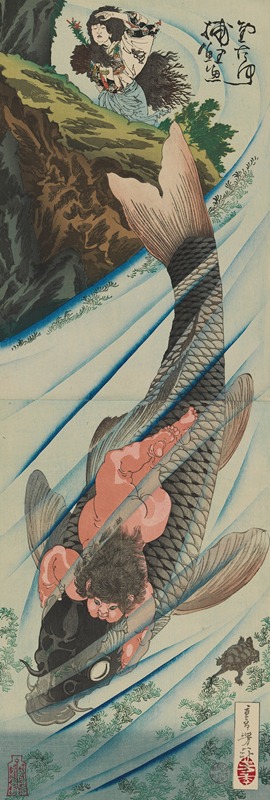
Kintarō Seizes the Carp
A hand-painted replica of Tsukioka Yoshitoshi’s masterpiece Kintarō Seizes the Carp, meticulously crafted by professional artists to capture the true essence of the original. Each piece is created with museum-quality canvas and rare mineral pigments, carefully painted by experienced artists with delicate brushstrokes and rich, layered colors to perfectly recreate the texture of the original artwork. Unlike machine-printed reproductions, this hand-painted version brings the painting to life, infused with the artist’s emotions and skill in every stroke. Whether for personal collection or home decoration, it instantly elevates the artistic atmosphere of any space.
"Kintarō Seizes the Carp" is a woodblock print by the renowned Japanese artist Tsukioka Yoshitoshi, created in 1881. Yoshitoshi, a prominent figure in the ukiyo-e art movement, is celebrated for his innovative approach to traditional Japanese woodblock printing, particularly during the late Edo and early Meiji periods. His works often depict historical scenes, folklore, and kabuki actors, and he is known for his dynamic compositions and expressive use of color.
The print "Kintarō Seizes the Carp" is part of Yoshitoshi's series "Kinsei Kyōgiden" (Biographies of Modern Men), which showcases various legendary and historical figures. Kintarō, the subject of this particular print, is a popular figure in Japanese folklore. Often depicted as a child with extraordinary strength, Kintarō is said to have been raised in the mountains by a mountain witch or yama-uba. He is frequently associated with nature and animals, and stories of his exploits often involve his interactions with the natural world.
In this print, Yoshitoshi captures the essence of Kintarō's legendary strength and his connection to nature. The image depicts the young hero seizing a giant carp, a feat that symbolizes his power and bravery. The carp, a common motif in Japanese art, is often associated with perseverance and determination, as it is known for swimming upstream against strong currents. This imagery reinforces Kintarō's character as a symbol of strength and resilience.
Yoshitoshi's artistic style in this print is characterized by bold lines and vibrant colors, typical of his later works. The composition is dynamic, with Kintarō's figure dominating the scene as he grapples with the carp. The use of color and line work effectively conveys the movement and energy of the struggle, drawing the viewer's eye to the central action of the piece.
The print reflects Yoshitoshi's mastery of the woodblock printing technique, which involves carving an image into a wooden block, applying ink, and then pressing it onto paper. This method allows for the production of multiple copies of a single image, making ukiyo-e prints accessible to a wide audience. Yoshitoshi's work, including "Kintarō Seizes the Carp," played a significant role in the popularization of ukiyo-e art during a time of cultural transition in Japan.
Tsukioka Yoshitoshi's contributions to the art world extend beyond his technical skill; he is also credited with revitalizing the ukiyo-e genre during a period when it faced decline due to the advent of photography and Western art influences. His ability to blend traditional Japanese themes with innovative artistic techniques has left a lasting impact on the art form.
"Kintarō Seizes the Carp" remains a testament to Yoshitoshi's artistic vision and his ability to capture the spirit of Japanese folklore through his prints. The piece continues to be appreciated for its cultural significance and artistic merit, offering insight into the rich tapestry of Japanese mythology and the enduring appeal of its legendary heroes.





